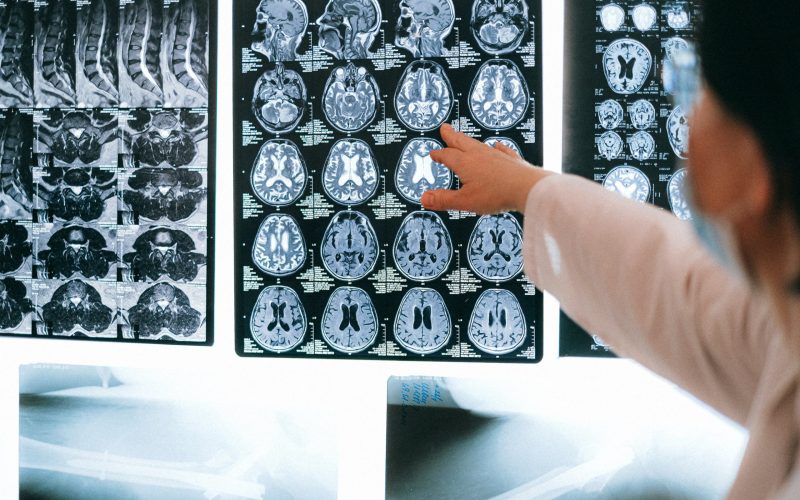When an infant suddenly dies, the grieving parents (and often the state’s child welfare agency) want—and deserve—answers. Whenever an infant presents at the emergency room with (1) subdural hemorrhage (bleeding in the brain), (2) retinal hemorrhages (bleeding behind the eyes) and (3) cerebral edema (swelling in the brain) (“the triad”), the answer has routinely been Shaken Baby Syndrome (SBS) [1]. In recent years, medical experts have begun to consider alternative reasons for a child to show these symptoms—reasons that do not necessarily imply child abuse—but this has not been without controversy.
Baby Rehma
By all accounts, Rehma’s first birthday party was a resounding success. The typically joyful and bubbly infant celebrated her first year of life surrounded by her family, friends, and cake [2]. Lots of cake.
Two days later (on her birthday), Rehma’s parents said their goodbyes to her as they headed off to work, leaving Rehma in the care of her nanny. According to the nanny, Rehma appeared tired and lethargic, and she spent the majority of the next six hours asleep [3]. Although this was unusual for the active infant, Rehma’s parents and grandparents presumed she was just worn out from the previous day’s activities and heeded the nanny’s warning’s not to disturb her nap as they visited the home throughout the day.
Around 4:30 p.m., Rehma’s mother returned home from work to find her daughter “breathing, but her eyes were closed and her body was jerking” [4]. Rehma was rushed to the emergency room and presented with bleeding inside her brain and behind her eyes, bruising on her skull and spine, and partially healed fractures on her arm and leg [5]. Rehma’s parents were unable to explain why their daughter would present with so many old and new injuries, and the doctors began to suspect the worst: that Rehma had been violently abused.
The emergency room doctors brought in Dr. Newton, a board-certified child abuse pediatrician, to review the case [6]. After looking at her brain scan and considering the other injuries, Dr. Newton determined that the only explanation for Rehma’s injuries was that she had been shaken. Approximately 48 hours after her first birthday, Rehma was declared braindead. Immediately, suspicion was placed on Rehma’s nanny, who later pleaded not guilty after a grand jury indicted her for “murder and assault and battery.” [7]
Shaken Baby Syndrome (SBS)
SBS, also known as Abusive Head Trauma (AHT), has long been accepted in the medical community and has led to thousands of criminal convictions for child abuse. Sometimes, convictions come years after the abuse as the effects of the child’s injuries develop. Notably, in June 2021, Terry McKirchy was charged with first-degree murder when a child she shook so severely it caused permanent brain damage died 35 years after incident [8].
Dating back to the early 1950s, scientists theorized that the triad symptoms could only come from an infant being violently shaken [9]. Although this theory was impossible to test, it was widely circulated in medical journals and became the popular diagnosis for infants presenting with the triad symptoms beginning in the late-1980s through early-1990s. As of December 2021, approximately “1,300 children in the United States are reported as victims of abusive head trauma each year,” with an estimated 25% resulting in fatalities [10].
The Unreliability of SBS
Since it was first theorized, SBS has lacked clear evidentiary support. Pediatricians and medical scientists alike have found that the triad symptoms (bleeding in the brain, bleeding behind the eyes, swelling of the brain), absent any other injuries or symptoms, do not necessarily indicate that an infant was violently shaken or subjected to trauma. In fact, “no one knows the amount of force needed to shake a baby to death” because it is extremely challenging to test [11]. Major critics of SBS being pathognomonic of abuse have found that violently shaking an infant would result in fractures in the cervical spine, but not bleeding in the brain or eyes [12]. Even the late Supreme Court Justice Ruth Bader Ginsburg professed that “[d]oubt has increased in the medical community ‘over whether infants can be fatally injured through shaking alone’” [13].
Nevertheless, specialists tasked with diagnosing SBS and the American Academy of Pediatrics continue to assert that “the science behind [SBS] is really quite clear” and “[v]iolent shaking for just a few seconds has the potential to cause severe injuries” [14]. Given its widespread acceptance in the medical community, those wishing to challenge the diagnosis face significant roadblocks. Often, those accused of SBS have to pay exorbitant legal fees to fly in an out-of-state expert to testify that the physician erred in concluding the injuries were consistent with SBS.
Disagreement Among Experts
After initially concluding that Rehma was the victim of a homicide, medical examiner Dr. Katherine Lindstrom changed her mind [15]. It was not SBS that killed Rehma, but it may have been a brain bleed of unknown cause, she determined. With that, Rehma’s nanny was set free, and Rehma’s case would never be seen by a jury.
Dr. Lindstrom announced that she changed her mind after reading the opinions of the nine medical experts hired to defend Rehma’s nanny. Their opinions each presented alternative rationales for why Rehma had died, ranging from a rare inflammatory disease to a bleeding disorder [16]. Dr. Lindstrom’s decision was met with immense outrage, which has become the standard reaction to any doctor who challenges abuse head trauma’s forensic reliability.
The Future of SBS
The medical community is slow to accept that long held beliefs, though well-intended, may be incorrect. Although there has been a recent increase in medical experts challenging the reliability of SBS, there has also been a rise in foundations and non-profits dedicated to maintaining the “triad” as supporting the forensic conclusion of abuse. Rehma’s parents founded The Rehma Fund for Children, which paid for a “physician training module on abusive head trauma” [17]. In Arizona, the Valley of the Sun Chapter of Parents of Murdered Children, Inc. provides various services relating to child abuse investigations.
The issue of “Shaken Baby Syndrome” continues to be a cutting edge battleground in medicine and law as these organizations adjust to new empirical data. The future of SBS is uncertain; however, as equal parts medical diagnosis and forensic conclusion, SBS/AHT and its place in medicine and law will continue to be debated for years to come.
[1] https://www.cnn.com/interactive/2021/12/health/shaken-baby-syndrome-legal-battle/chapter-1.html
[2] Id.
[3] Id.
[4] Id.
[5] Id.
[6] Id.
[7] Id.
[8] https://www.nbcnews.com/news/us-news/florida-babysitter-charged-murder-37-years-later-n1275118
[9] https://onsbs.com/2011/05/30/a-brief-history-of-sbs/
[10] https://www.cnn.com/interactive/2021/12/health/shaken-baby-syndrome-legal-battle/chapter-1.html
[11] Id.
[12] Papetti, R. (2018). The Forensic Unreliability of Shaken Baby Syndrome (C. Milroy, Ed.; 1st ed.). Academic Forensic Pathology International. Papetti’s book provides a comprehensive overview of the flaws with the SBS diagnosis.
[13] https://www.law.uh.edu/hjhlp/volumes/Vol_13_2/Narang.pdf
[14] https://www.cnn.com/interactive/2021/12/health/shaken-baby-syndrome-legal-battle/chapter-2.html
[15] Id.
[16] Id.
[17] https://www.cnn.com/interactive/2021/12/health/shaken-baby-syndrome-legal-battle/chapter-3.html
Markus Risinger joined Woodnick Law as a law clerk in 2012. Markus graduated cum laude from the Sandra Day O’Connor College of Law at Arizona State University.
Isabel Ranney is a law student at the Sandra Day O’Connor College of Law at Arizona State University, Associate Editor for the Law Journal for Social Justice, and clerk at Woodnick Law.



